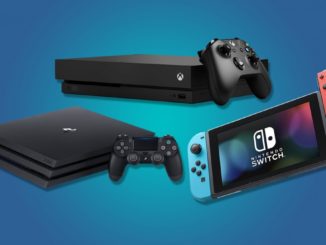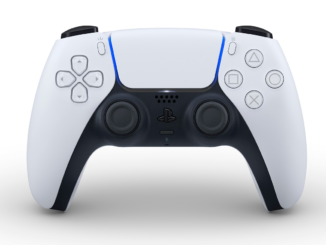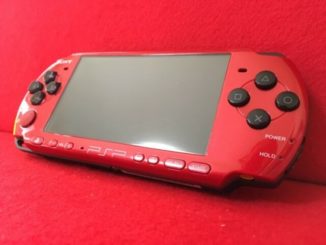
The PlayStation Portable is a jack of all trades. It plays music, videos, browses the Internet, and plays games. However, for an increasing number of people, this still isn’t enough. With its powerful dual-processor configuration and Memory Stick Pro Duo slot, the PSP is a pocket powerhouse, capable of much more than just gaming and multimedia.
This is where the homebrew community comes in. With some modifications to its system software, the PSP can run 3rd party software, just like an ordinary computer. A massive community has sprung up online that is dedicated to these modifications.
When Sony first released the PSP, it had no restrictions. It was possible to write 3rd party software and install it to a memory stick. The PS2dev community created a homebrew development kit for the new system, and the community of developers began to grow.
After a while, Sony started to realize this was a problem. Although 3rd party utilities and games were harmless, they realized it was possible to run commercial games from the memory stick as well, using homebrew ISO loaders. Sony knew that this could hurt their game sales, so they issued firmware version 2.0, which removed this functionality. In this version of the firmware, and every subsequent release, it is impossible to run anything but UMD disks and official game demos from Sony. While this makes piracy impossible, it also dealt a serious blow to the burgeoning homebrew community.
In late 2005, Homebrew developer Fanjita discovered a tantalizing hole in Grand Theft Auto: Liberty City Stories. By copying a special hacked game save to the memory stick and loading it in GTA, it was possible to purposely crash the PSP, and load custom code! For the first time since the release of firmware 2.00, it was possible to run homebrew code again. At the time, PSPs with firmware 1.50 were in high demand, and supplies were dwindling. Using this software exploit, Fanjita and the Noobz team were able to create a “downgrader” for the current firmware, version 3.40. It became possible to downgrade any PSP, as long as it had nothing higher than 3.40, to the older 1.50 firmware, and thus use it for homebrew once again.
Sony was none too happy about this exploit. They issued a recall on GTA:LCS, and sent new, patched copies to stores. They also began releasing firmware updates in the game disks themselves. Newer games required newer firmwares, and so homebrew users had to choose between a fully functional PSP, or a crippled system that was compatible with newer games. As always, the scene found workarounds, specifically a program called Devhook, but it was confusing and complicated to set up.
Custom Firmware
Custom firmware replaces your PSPs official firmware but it is not a permanent upgrade. You can easily uninstall the custom firmware and to back to official firmware if you don’t like or don’t want to use custom firmware anymore.
Custom Firmware has all the features of the official Sony firmware, but also adds the ability to load homebrew PSP ISOs and PSX EBOOTs directly from the game menu in the XMB. so you can still play your original UMD discs, Music and Videos using custom firmware.
Custom Firmware also has an option to use ‘No-UMD Mode’ so you can run your PSP ISOs without a UMD inserted. The ‘Sony NP9660’ No-UMD mode has the highest compatibility rate and almost all ISO games work with it.
If you have any PSP ISOs in ‘DAX’ format, you need to convert them to ISO or CSO files using UMDGEN, Custom Firmware doesn’t support the DAX format.
Your PSPs UMD Drive should be empty while upgrading / downgrading your PSP. (except when downgrading from 3.03 & 3.50 you will need a UMD inserted to start the downgrader) It is recommended to remove the UMD Disc from your PSP before you do anything in this guide.
If you don’t have a USB cable but you have a memory card reader, you can use that instead. when you see ‘connect your PSP to your computer and make a USB connection’, Turn off your PSP, take the memory stick out of your PSP and insert it into your memory card reader. When you see ‘close the USB connection and disconnect your PSP from your computer’ Take the memory stick out of your computer and insert it into your PSP and turn your PSP on.
A hacker known as Dark Alex developed a compelling solution. He designed a software package which, when installed on a PSP running the 1.50 firmware, allowed the user to install a hybrid firmware of his own design. In other words, a PSP with Dark Alex’s custom firmware has all the features and functionality of the standard Sony firmware, in addition to support for firmware 1.50 based software. The firmware also came with something called “HEN”, short for Homebrew ENabler. Developers could create software for the familiar 1.50 firmware, or the newer 3.XX series this way.
Dark Alex has continued refining his custom firmwares, and has managed to keep up with every major release from Sony. His latest stable firmware, M33 3.80, is the most advanced version yet. It boasts tons of new features including a custom devkit, support for a 1.50 kernel plugin, and most importantly, a hacked network update system. In the past, running network update would upgrade to the vanilla Sony firmware, removing home brew functionality. However, in M33 3.80, it because possible to update to newer custom firmwares with Sony’s own tool.
So what are the new features of this custom firmware? This new custom firmware has all the features the 4.01 official firmware has plus a few extras. Many people are asking me if it’s worth installing it and my answer is a YES. I have 4.01 M33-2 custom firmware installed already on my phat PSP and I haven’t encountered any bugs yet. But don’t take my word for it. Try it yourself. You can always revert back to your old 3.90 M33-3 if you want.
So much for the rambling. Here are the instructions on how to install the new custom firmware on your PSP.
Requirements
As always, please do check that you pass all the requirements before you can do the installation.
* A Fat PSP or Slim PSP already installed with a custom firmware. At least 3.52 M33-4 custom firmware must be installed on your Fat PSP and 3.60 M33 for the slim.
* A fully charged battery. I know it will run on 70% battery but 100% battery with the AC adapter plugged is the safest setup.
* A USB cable to transfer files from your computer to your PSP.
* The 4.01 M33-2 installer pack that I created for easy install. Download the 4.01 M33-2 installer pack and unzip on your computer.
The Steps
The steps are divided into 3. Please follow the directions carefully. I will not be held responsible for any bricks. Do this at your own risk! But I’m 100% sure you won’t brick your precious PSP if you follow the instructions carefully.
Step A – Installing the 4.01 M33 custom firmware
1. Connect your PSP to your computer using the USB cable. Open the Step A folder and copy the UPDATE folder to ms0:/PSP/GAME/. After copying, disconnect the PSP from your computer.
2. On the XMB menu on your computer, navigate to GAME > Memory Stick and run the 4.01 M33 update. When you run the update, the screen turns black. Follow the text instructions. It will take you to the Official Sony Update screen. That is normal. Continue with the process following the instructions.
3. The Sony Updater will run. Don’t turn off your PSP or interrupt the update. After the Update, you will be asked to press a certain button to restart your PSP. Do so.
4. Congratulations, your PSP is installed with 4.01 M33 custom firmware now. On to Step B.
Step B – Installation of the 4.01 M33 update
1. You can only do this if you are successful with Step A. Connect your PSP to your computer. On your memory stick, navigate to PSP/GAME and delete the UPDATE folder.
2. Now open STEP 2 folder to your computer and copy the UPDATE folder to ms0:/PSP/GAME/. Disconnect your PSP from the computer once you are done.
3. On the XMB menu, scroll to GAME > Memory Stick and run the 4.01 M33-2 update. Just follow the on screen instructions and you’ll be safe.
4. After the installation, you will be returned to the XMB screen.
5. Congratulations on your 4.01 M33-2 PSP.
Step C – 1.50 Kernel Add-on Installation Guide
1. This last set of steps is optional. You may do this or not. The next set of steps will be instructions on how to install the 1.50 Kernel Add on for the Fat PSP. Sorry slim owners.
2. Connect your PSP to your computer. Open Step C folder and then copy 150.PBP file from your computer to the root directory of your memory stick. And then copy 4XX folder from your computer to ms0:/PSP/.
3. Exit the USB mode and on your XMB, navigate to GAME > Memory Stick and then run the 1.50 Kernel Add-on program. Follow the on screen instructions.
4. After the installation is successful, you will be taken back to the XMB.
5. Congratulations. Your PSP is now the same as mine, a full battle gear handheld. Place your 1.50 home brews on the PSP/GAME150 folder.
Proudly WWW.PONIREVO.COM



